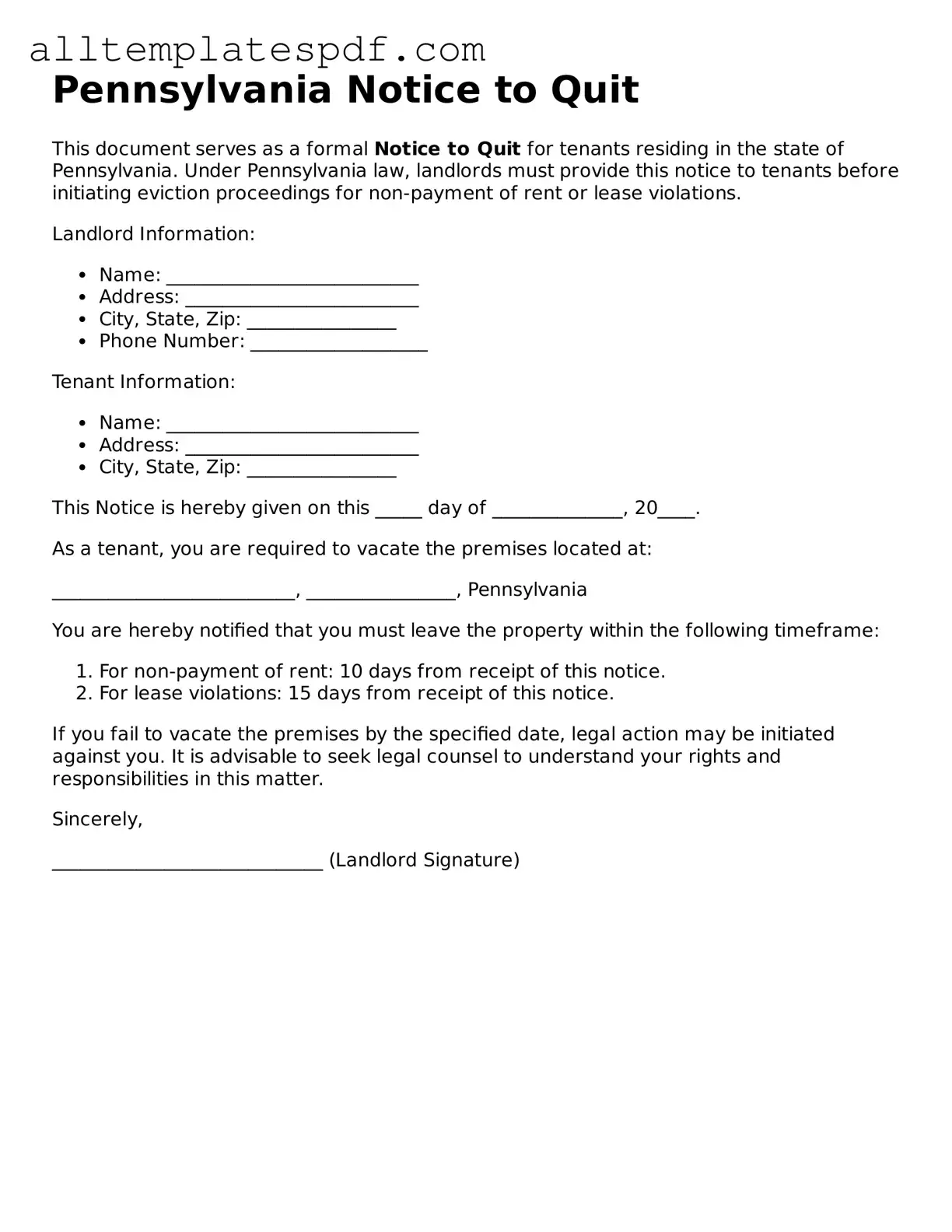Filling out the Pennsylvania Notice to Quit form requires careful attention to detail. One common mistake is failing to include the correct date. The date is crucial as it indicates when the tenant must vacate the property. If the date is inaccurate, it can lead to confusion and potential legal issues.
Another frequent error is neglecting to provide the tenant's full name. Using nicknames or initials can create ambiguity. The notice should clearly identify the tenant to ensure they understand the seriousness of the situation.
People often forget to specify the reason for the eviction. The Pennsylvania Notice to Quit requires a clear explanation of why the notice is being issued. Without this information, the tenant may not grasp the urgency of the situation or may challenge the eviction.
Additionally, some individuals fail to sign the form. A signature is necessary to validate the notice. Without it, the document may be considered incomplete, and the eviction process could be delayed.
Another mistake is not providing a copy of the notice to the tenant. Simply filling out the form is not enough. The tenant must receive a copy to ensure they are informed of the eviction proceedings.
People sometimes miscalculate the notice period. Pennsylvania law requires specific timeframes depending on the reason for eviction. Failing to adhere to these timelines can render the notice invalid.
Using unclear language can also lead to issues. The form should be filled out using straightforward language. Ambiguities can lead to misunderstandings and may provide grounds for the tenant to contest the eviction.
Lastly, individuals may overlook local laws or regulations. While the state provides a general framework, local jurisdictions may have additional requirements. Ignoring these can complicate the eviction process and result in unnecessary delays.
